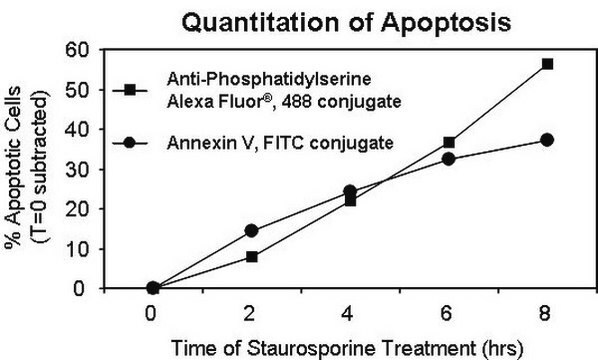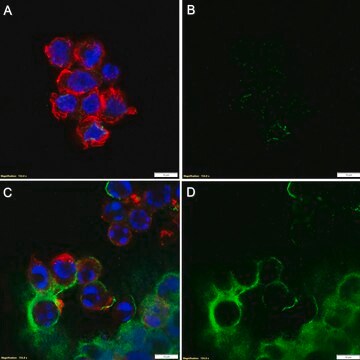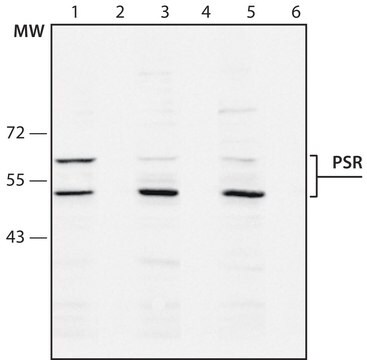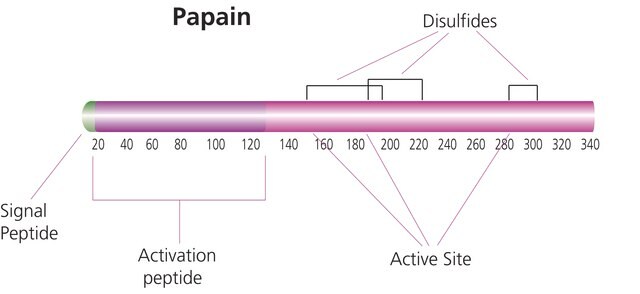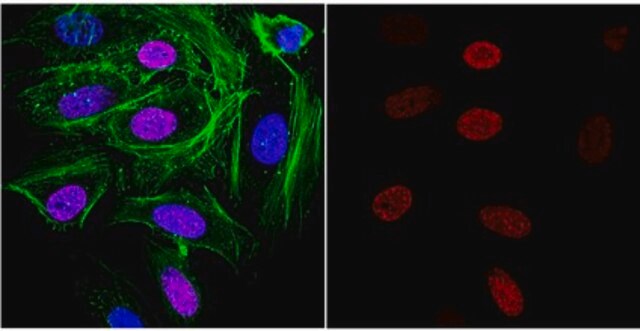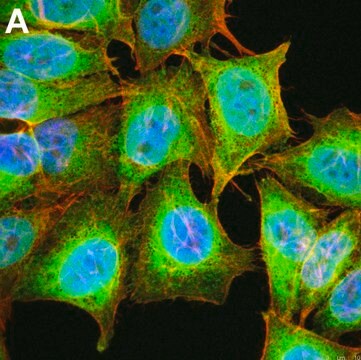05-719
Anti-Phosphatidylserine Antibody, clone 1H6
clone 1H6, Upstate®, from mouse
Sign Into View Organizational & Contract Pricing
All Photos(2)
About This Item
UNSPSC Code:
12352203
eCl@ss:
32160702
NACRES:
NA.41
Recommended Products
biological source
mouse
Quality Level
antibody form
purified immunoglobulin
antibody product type
primary antibodies
clone
1H6, monoclonal
species reactivity
vertebrates
manufacturer/tradename
Upstate®
technique(s)
flow cytometry: suitable
immunohistochemistry: suitable
isotype
IgG
shipped in
dry ice
target post-translational modification
phosphorylation (pSer)
Gene Information
human ... PTDSS1(9791)
Related Categories
General description
Significance:
Anti-Phosphatidylserine may be used to detect translocation of the membrane phospholipid phosphatidylserine (PS) from the inner to the outer cell membrane leaflet; it provides an alternative to Annexin V for quantitation of apoptosis.
Anti-Phosphatidylserine may be used to detect translocation of the membrane phospholipid phosphatidylserine (PS) from the inner to the outer cell membrane leaflet; it provides an alternative to Annexin V for quantitation of apoptosis.
Phosphatidylserine (PS) is a phospholipid (1,2-diacyl-sn-glycerol-(3)-L-phosphoserine) found in the membrane of all plants and animals. PS is most concentrated in the brain, as PS makes up about 10% of the lipid content of neurons. Neural PS is thought to play a role in maintaining nerve cell integrity, enhancing neurotransmitter signal efficiency, and improving nerve cell signal transmission. One of the key features of apoptosis is the expresion of PS on the outer cell membrane. PS is usually found on the inner side of the plasma membrane, but during early stage apoptosis, the PS is translocated to the outer membrane. FITC-labeled annexin V can bind to the exposed PS, providing the basis of most annexin V-based apoptosis assays.
Specificity
Recognizes phosphatidylserine (PS) in cell membranes
Immunogen
Liposomes containing 70% phosphatidylserine and 30% phosphatidylglycerol
Application
Anti-Phosphatidylserine Antibody, clone 1H6 is an antibody against Phosphatidylserine for use in FC, IH.
Flow Cytometry: 0.2-2 μg/mL of a previous lot detected cell surface phosphatidylserine on Jurkat cells treated with Fas Ligand vesicles (Catalog # 01-210). See page two.
Immunohistochemistry: This antibody has been reported by an independent laboratory to detect phosphatidylserine in rat carotid artery paraffin sections fixed with ethanol/acetone (Mandinov, L., 2003).
Immunohistochemistry: This antibody has been reported by an independent laboratory to detect phosphatidylserine in rat carotid artery paraffin sections fixed with ethanol/acetone (Mandinov, L., 2003).
Research Category
Apoptosis & Cancer
Apoptosis & Cancer
Research Sub Category
Apoptosis - Additional
Apoptosis - Additional
Quality
routinely evaluated by flow cytometry on Jurkat cells treated with Fas Ligand vesicles (Catalog #01-210)
Target description
none given
Physical form
Format: Purified
Protein G Purified
Purified IgG supplied in 0.1M Tris-Glycine, 0.15M NaCl, 0.05% Sodium Azide, pH 7.4 before the addition of glycerol to 30%. Liquid at -20°C.
Storage and Stability
Stable for 1 year at from date of receipt.
Analysis Note
Control
Brain tissue
Brain tissue
Other Notes
Concentration: Please refer to the Certificate of Analysis for the lot-specific concentration.
Legal Information
UPSTATE is a registered trademark of Merck KGaA, Darmstadt, Germany
Disclaimer
Unless otherwise stated in our catalog or other company documentation accompanying the product(s), our products are intended for research use only and are not to be used for any other purpose, which includes but is not limited to, unauthorized commercial uses, in vitro diagnostic uses, ex vivo or in vivo therapeutic uses or any type of consumption or application to humans or animals.
Not finding the right product?
Try our Product Selector Tool.
Storage Class Code
10 - Combustible liquids
WGK
WGK 1
Certificates of Analysis (COA)
Search for Certificates of Analysis (COA) by entering the products Lot/Batch Number. Lot and Batch Numbers can be found on a product’s label following the words ‘Lot’ or ‘Batch’.
Already Own This Product?
Find documentation for the products that you have recently purchased in the Document Library.
Jiunn-Min Shieh et al.
International journal of medical sciences, 10(8), 988-994 (2013-06-27)
Previously, we identified a sequence variant (N375S) of c-Met gene, however, its association with lung cancer risk and prognosis remain undefined. We investigated the genotype distribution of the c-Met-N375S sequence variant in 206 lung cancer patients and 207 non-cancer controls
Norimoto Kobayashi et al.
Immunity, 27(6), 927-940 (2007-12-18)
The T cell immunoglobulin mucin (TIM) proteins regulate T cell activation and tolerance. Here we showed that TIM-4 is expressed on human and mouse macrophages and dendritic cells, and both TIM-4 and TIM-1 specifically bound phosphatidylserine (PS) on the surface
Jing Wang et al.
Journal of virology, 91(2) (2016-11-04)
Human TIM and TAM family proteins were recently found to serve as phosphatidylserine (PS) receptors which promote infections by many different viruses, including dengue virus, West Nile virus, Ebola virus, Marburg virus, and Zika virus. In the present study, we
Lazar Mandinov et al.
Proceedings of the National Academy of Sciences of the United States of America, 100(11), 6700-6705 (2003-05-20)
The induction of an acute inflammatory response followed by the release of polypeptide cytokines and growth factors from peripheral blood monocytes has been implicated in mediating the response to vascular injury. Because the Cu2+-binding proteins IL-1alpha and fibroblast growth factor
P Nusbaum et al.
Biochemical Society transactions, 32(Pt3), 477-479 (2004-05-26)
CD43 down-regulation during the apoptosis of PMN (polymorphonuclear cells) is not caused by proteolysis or internalization. Could it be released with bleb-derived membrane vesicles? Membrane blebbing was followed by microscopy on PMN 'synchronized' by an overnight incubation at 15 degrees
Our team of scientists has experience in all areas of research including Life Science, Material Science, Chemical Synthesis, Chromatography, Analytical and many others.
Contact Technical Service